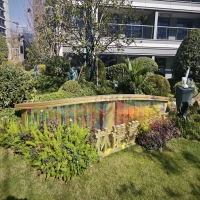Welcome to the website for landscape facilities products and knowledge.
What are the differences between single and multi-compartment designs for waste sorting?
Waste sorting is a critical component of modern waste management systems, and the design of sorting bins plays a significant role in its effectiveness. Single-compartment and multi-compartment designs are the two primary approaches, each with distinct advantages and limitations.
Single-compartment designs are simpler and more cost-effective, requiring less space and maintenance. They are ideal for areas with limited recycling infrastructure or where waste separation is not strictly enforced. However, they often lead to contamination of recyclables, as users may mix different types of waste.
Multi-compartment designs, on the other hand, feature separate sections for different waste streams, such as paper, plastic, and organic waste. This design encourages proper sorting at the source, improving recycling efficiency and reducing contamination. While they are more expensive and require more space, their long-term benefits for waste management and environmental sustainability are substantial.
In summary, single-compartment bins are practical for simplicity and low-cost solutions, whereas multi-compartment bins excel in promoting recycling and reducing waste pollution. The choice depends on the specific needs and goals of the waste management system in place.
Related search:

Recommendation
Metal and acrylic color-changing combined curtain wall for large-scale public landscape facilities